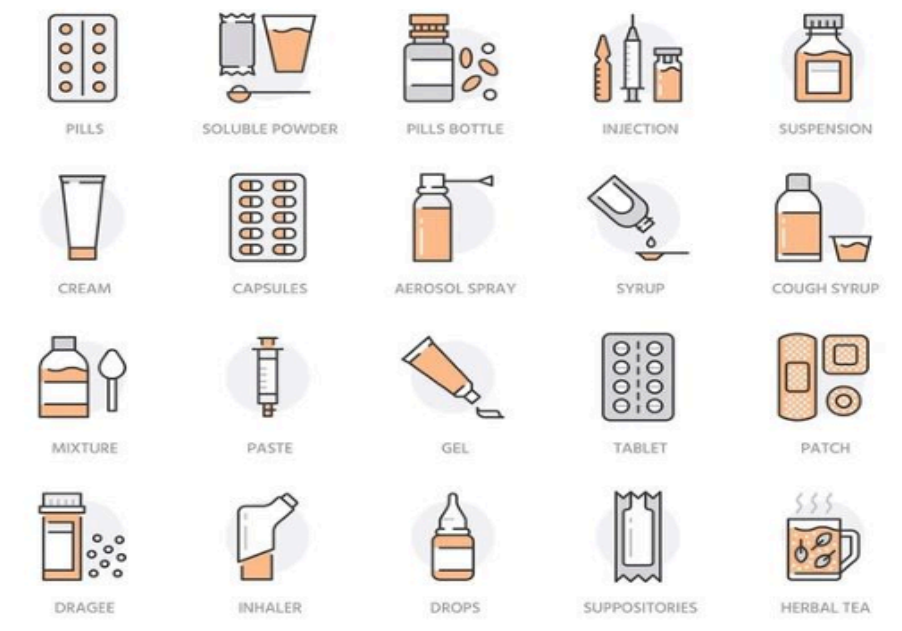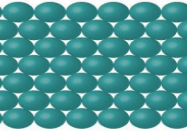PHPhyPhar (Lecture) | Module 1: INTRODUCTION TO PHYSICAL PHARMACY
1/121
There's no tags or description
Looks like no tags are added yet.
Name | Mastery | Learn | Test | Matching | Spaced |
|---|
No study sessions yet.
122 Terms
Physical Pharmacy
Deals with the physicochemical principles underlying dosage forms and drug delivery systems’ design and manufacture, and drugs’ bioavailability.
Physical Pharmacy
It is the study of the physical and chemical properties of the drug.
Physical Pharmacy
Entails the formulation of the drug itself
Biopharmaceutics
The study of the physical and chemical properties of drugs and their proper dosage as related to the onset, duration, and intensity of drug action. After making the drug, we will already apply it in life, “bio”
Biopharmaceutics
This starts from the Liberation and ends with the Response
Liberation
Biopharmaceutics starts from the ________ and ends with the Response
Response
Biopharmaceutics starts from the Liberation and ends with the ________
Liberation
BIOPHARMACEUTICS: Setting the drug free
Absorption
BIOPHARMACEUTICS: movement of the free drug to your systemic circulation
Distribution
BIOPHARMACEUTICS: to the site of action or the rest of the body
Metabolism
BIOPHARMACEUTICS: you will digest the drug → making it less toxic
Elimination
BIOPHARMACEUTICS: you will excrete the drug
Pharmacodynamics
entails the response of the drug
The effect of the drug, either toxic or theurapeutic effect.
Drug Dosage Forms

Suspension
DRUG DOSAGE FORMS: solid particle in liquid form.
Either a colloid, an amorphous drug, or a crystalline drug.
Syrups
DRUG DOSAGE FORMS: same as suspension, but it has sugar content for preserving the drug.
Sucrose, a monosaccharide and a disaccharide, can preserve the drug
Suppositories
DRUG DOSAGE FORMS: inserted via the rectum or vagina
Tablets
COMMON STATE OF THE DRUG IN THE DOSAGE FORM: Crystals in a compressed powder
Capsules, Powder-Filled
COMMON STATE OF THE DRUG IN THE DOSAGE FORM: Crystals in a noncompressed powder - hard gel capsules
Capsules, Liquid-Filled
COMMON STATE OF THE DRUG IN THE DOSAGE FORM: Molecules or crystals in vegetable oil - Ex. Advil
Suppositories
COMMON STATE OF THE DRUG IN THE DOSAGE FORM: Crystals in waxy, water miscible, or water-immiscible base
Solutions
COMMON STATE OF THE DRUG IN THE DOSAGE FORM: Molecules
Suspensions
COMMON STATE OF THE DRUG IN THE DOSAGE FORM: Crystals in an aqueous or nonaquous liquid
Ointments
COMMON STATE OF THE DRUG IN THE DOSAGE FORM: Crystals or molecules in a semi-solid oleaginous base
Creams
COMMON STATE OF THE DRUG IN THE DOSAGE FORM: Crystals or molecules in water, miscible or immiscible, semisolid cream base
Gels
COMMON STATE OF THE DRUG IN THE DOSAGE FORM: Crytals or molecules in a water-miscible semi-solid gel base
Aerosols
COMMON STATE OF THE DRUG IN THE DOSAGE FORM: Crystals or molecules in a gas, liquid or semisolid
Oral
ROUTES OF DRUG ADMINISTRATION: tablet
Inhaler
ROUTES OF DRUG ADMINISTRATION: by mouth/nose
Sublingual
ROUTES OF DRUG ADMINISTRATION: under the tongue
Buccal
ROUTES OF DRUG ADMINISTRATION: side of the cheeks
Rectal
ROUTES OF DRUG ADMINISTRATION: rectum
Topical
ROUTES OF DRUG ADMINISTRATION: skin
Otic
ROUTES OF DRUG ADMINISTRATION: ears
Optic
ROUTES OF DRUG ADMINISTRATION: eyes
IV
PARENTERALS, INJECTIONS: 25°
IM
PARENTERALS, INJECTIONS: 90°
Intraarterial
PARENTERALS, INJECTIONS: arteries
Subcutaneous
PARENTERALS, INJECTIONS: 45° (ex., Insulin, pinch the skin)
Intradermal
PARENTERALS, INJECTIONS: dermis
15
INTRADERMAL: How many degrees when the skin is thick?
10
INTRADERMAL: How many degrees when the skin is thin?
Enteral
Consists of:
Oral
Rectal
Injection
Consists of:
Intravenous
Intraarterial
Intramuscular
Subcutaneous
Intraosseous
Intrathecal
Parenteral
Consists of:
Intravenous
Intraarterial
Intramuscular
Subcutaneous
Intraosseous
Intrathecal
Inhalation
Topical
Transdermal
Sublingual
Nasal
Enteral
will pass the GIT
There is a higher incidence that the drug will be metabolized by the LIVER.
Liver
ENTERAL: It will pass the GIT and there is a higher incidence that the drug will be metabolized by the?
Hepatic First Pass Metabolism
ENTERAL: This is where the drug is metabolized before inducing its effects. 50% of the drug will be metabolized and will be excreted, 50% - produce the therapeutic effect.
Parenteral
will bypass the GIT
injections
Almost of the local drugs like inhalers, topical ointments, and transdermal patches
Parenteral
It was invented to cancel the first-pass metabolism
IV
PARENTERAL: since the drug will be directly administered to the veins, it means it is 100% bioavailable
Parenteral
Some situations require _________ drugs to produce immediate effects
Inferior Rectal Vein, Middle Rectal Vein, and Superior Rectal Vein
There are 3 types of rectum vents
Inferior Rectal Vein
Will proceed to the inferior vena cava
Vena cava - direct to heart
Middle Rectal Vein
Will proceed to the inferior vena cava (bypassing liver metabolism)
Ideal location for inserting the suppository
Middle Rectal Vein
Goal in administering drugs - to produce their therapeutic effects
As much as possible, you will bypass the metabolism
wall of the rectum, perfect body temperature to make suppository melt (ADJACENT TO ANUS)
Superiod Rectal Vein
Will lead to the inferior mesenteric vein
It will be directed to the liver (for metabolism)
Mesenteric Vein
The superior rectal vein drains the upper part of the rectum and continues as the inferior?
Liver
Primary organ where metabolism happens—makes the drug less toxic or non-toxic at all → will dissolve in urine
Kidney
Primary organ for excretion
Urine
Waste product from kidney, have higher water content → they will be EXCRETED
Urine
Since “like dissolves like,”; polar drug will be dissolve in the?
Bioavailability
The proportion (percent or fraction) of an administered dose of unchanged drug that reaches the systemic circulation.
Bioavailability
Tablet by oral → liberated in small intestine → absorbed in the stomach
Bioavailability
The fraction of the unchanged drug that will reach the circulation
100%
BIOAVAILABILITY: What is the bioavailability of IV?
30% or 50%
BIOAVAILABILITY: What is the bioavailability of PO?
PO
BIOAVAILABILITY: this will pass through the GIT
Liberation, Absorption, Distribution, Metabolism and Excretion
DRUG DISPOSITION
Liberation
DRUG DISPOSITION:
release of the drug from its dosage form into the body fluids
Saliva, urine, sweat, blood,
The drug must be dissolved in stomach acid (HCl) or the gut
Some drugs that are not well formulated here
Absorption
DRUG DISPOSITION:
into the bloodstream - rate-limiting steps
How will it get into circulation
Rate-Limiting Steps
ABSORPTION:
It will limit the absorption or delay the therapeutic effect
Layer of cells - delays the absorption
In the stomach there is a single layer of columnar cells
GUT - have enterocytes
Distribution
DRUG DISPOSITION:
to various parts of the body, especially to the site of action
Where it will go
Metabolism
DRUG DISPOSITION:
by enzymes - First-Pass Metabolism
How it will be broken down
Phase 1 Metabolism and Phase 2 Metabolism
DRUG DISPOSITION:
convert the drug into its polar form (water-loving)
Functionalization
METABOLISM: PHASE 1 REACTION is called as?
Phase 1 Metabolism
METABOLISM: Add or uncover a polar group in the drug molecule
Conjugation
METABOLISM: PHASE 2 REACTION is called as?
Phase 2 Metabolism
METABOLISM: Will covelently bond (add) a polar functional group
Excretion
DRUG DISPOSITION:
elimination through the kidneys or other routes
Skin - sweat/perspiration waste product
Lungs - carbon dioxide
GIT - feces
How will it be removed from the body
Skin
EXCRETION: sweat/perspiration waste produc
Lungs
EXCRETION: carbon dioxide
GIT
EXCRETION: feces
Solid State Properties
PHYSICOCHEMICAL PROPERTIES OF THE DRUG: Most of the drugs are either in crystalline form or Amorphous form
Crystalline
PHYSICOCHEMICAL PROPERTIES OF THE DRUG: has a regular repeating unit called a lattice, which is why they were able to mold forms like a diamond and rock salt.
Amorphous
PHYSICOCHEMICAL PROPERTIES OF THE DRUG:
have irregular to regular repeating units
Do not have the order
Ex. glass (when broken, it is more like a powder than a crystal)
Crystalline

Amorphous

Amorphous
CHEMICAL NATURE: Isotropic
Crystalline
CHEMICAL NATURE: Anisotropic
Ionized and/or Nonionized
Most drugs are weak acids or weak bases
can exist in the ______ and/or __________ form, depending on the pH of the medium
pH of the Medium
IONIZATION:
the acidity of the medium
Ionized
more polar = dissolves in aq.
Nonionized
nonpolar = passes the membrane
Positive or Negative
You will ionize the molecules - “you will free” their ions, either?
Polar
Making it more ____ → it will be excreted (“like disolves like”)
Therapeutic Effects
IONIZATION:
If you have a weak acid drug product and you will subject it to an acidic environment, since “like absorbs like” = it will be absorbed. And vice versa
If you subject a product to the same product, ionization will be cancelled, and there will be no ionization that will happen, which means the drug will be ________ and will produce?
Polar
IONIZATION:
If you have a weak acid drug and subject it to a basic environment, ionization will happen, which is why you will have a more ______ drug product that is readily excreted.
Polar
IONIZATION:
If you subject a weak basic drug to an acidic environment, it will be ionized, and since it is ionized, you will have a more ______ drug, which is readily excreted
Solubility
________ of the drug is a fundamental physicochemical property, and its dissolution is a fundamental physicochemical process